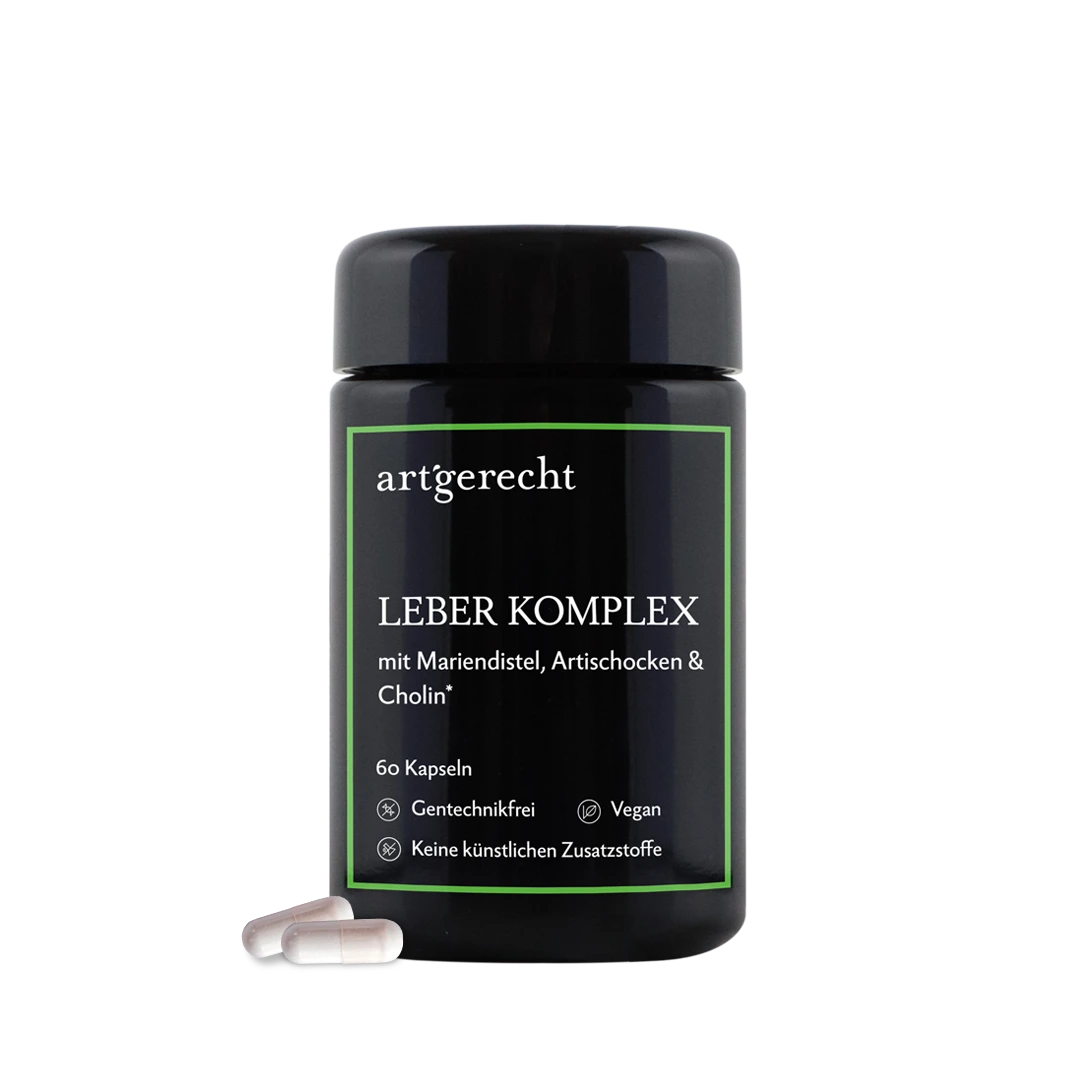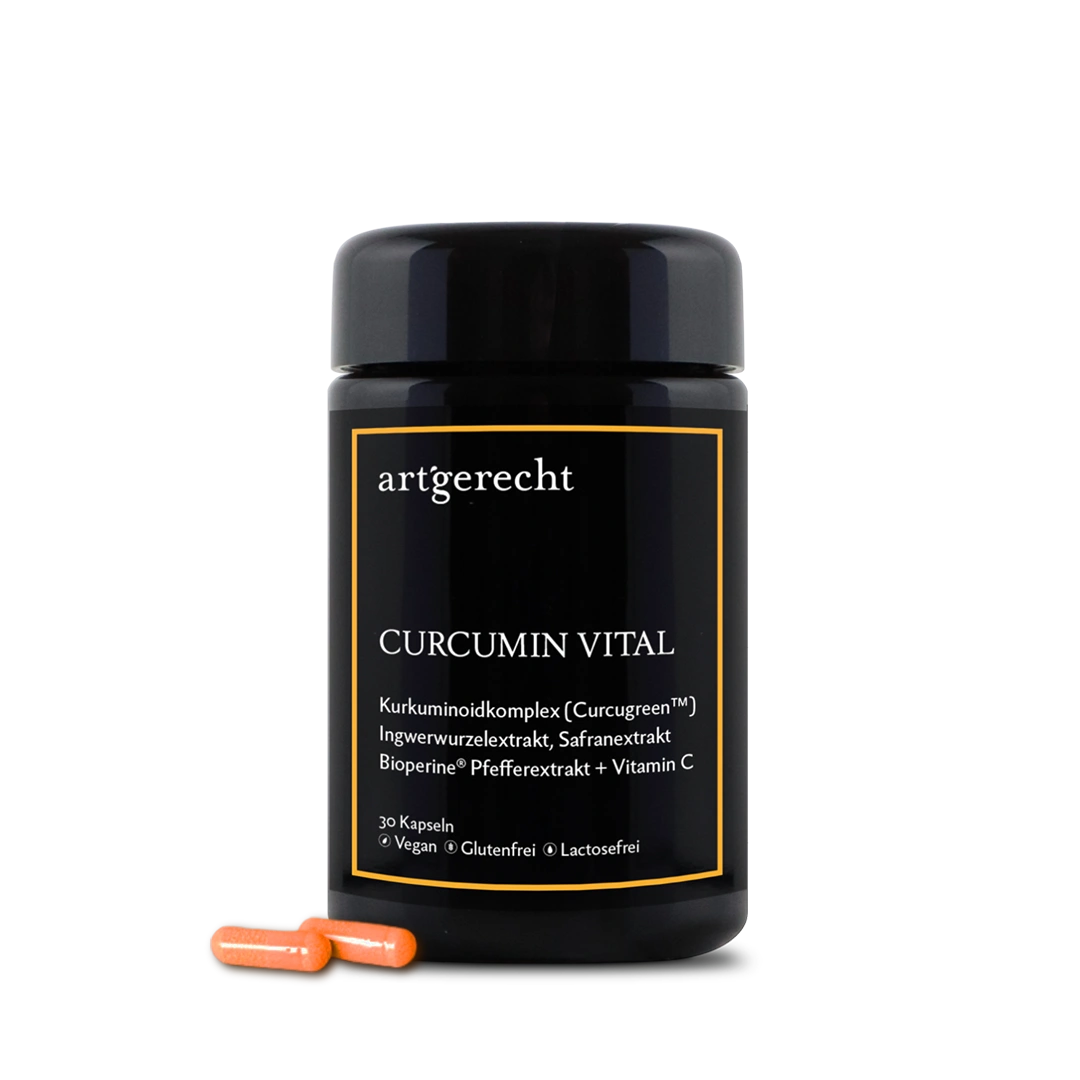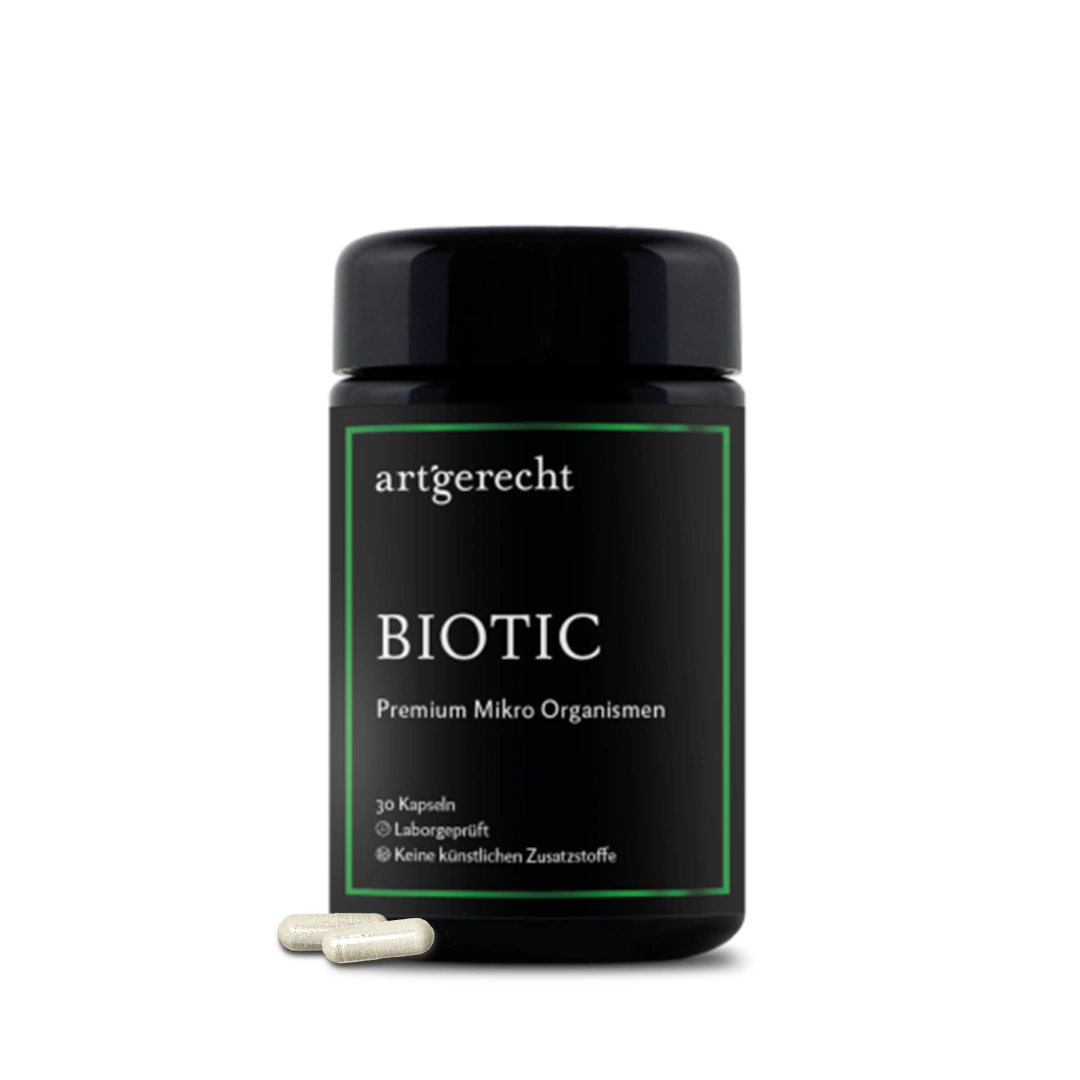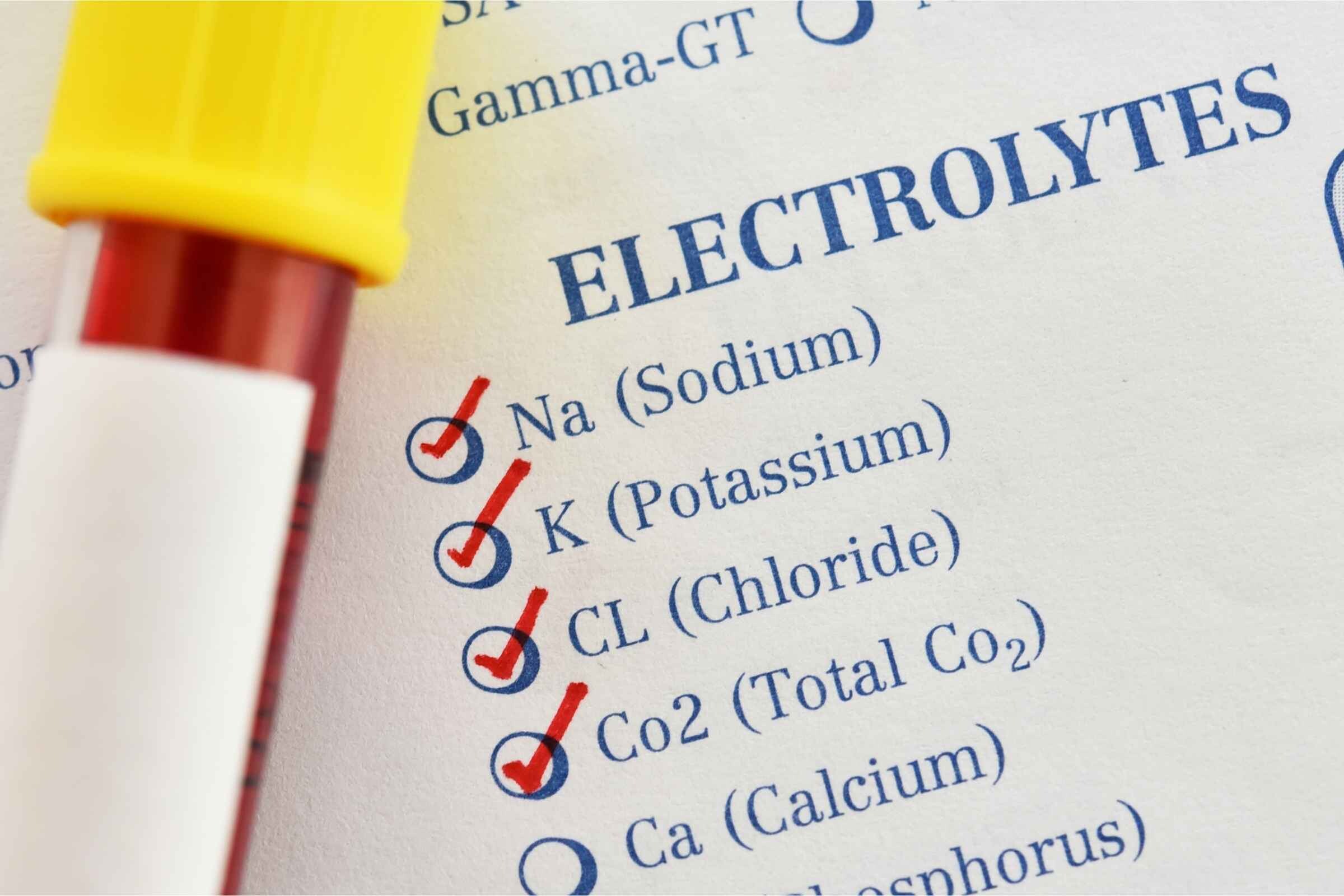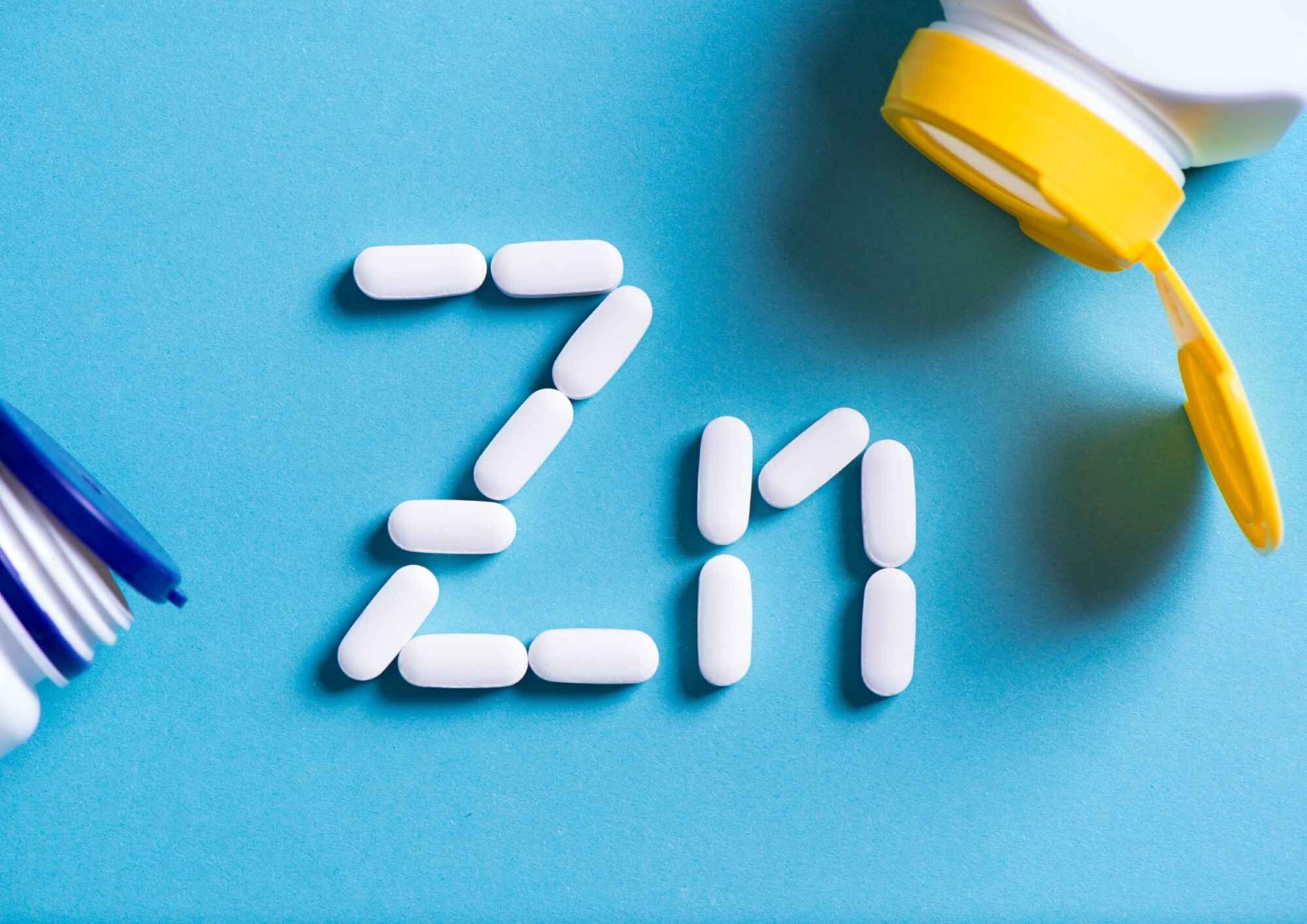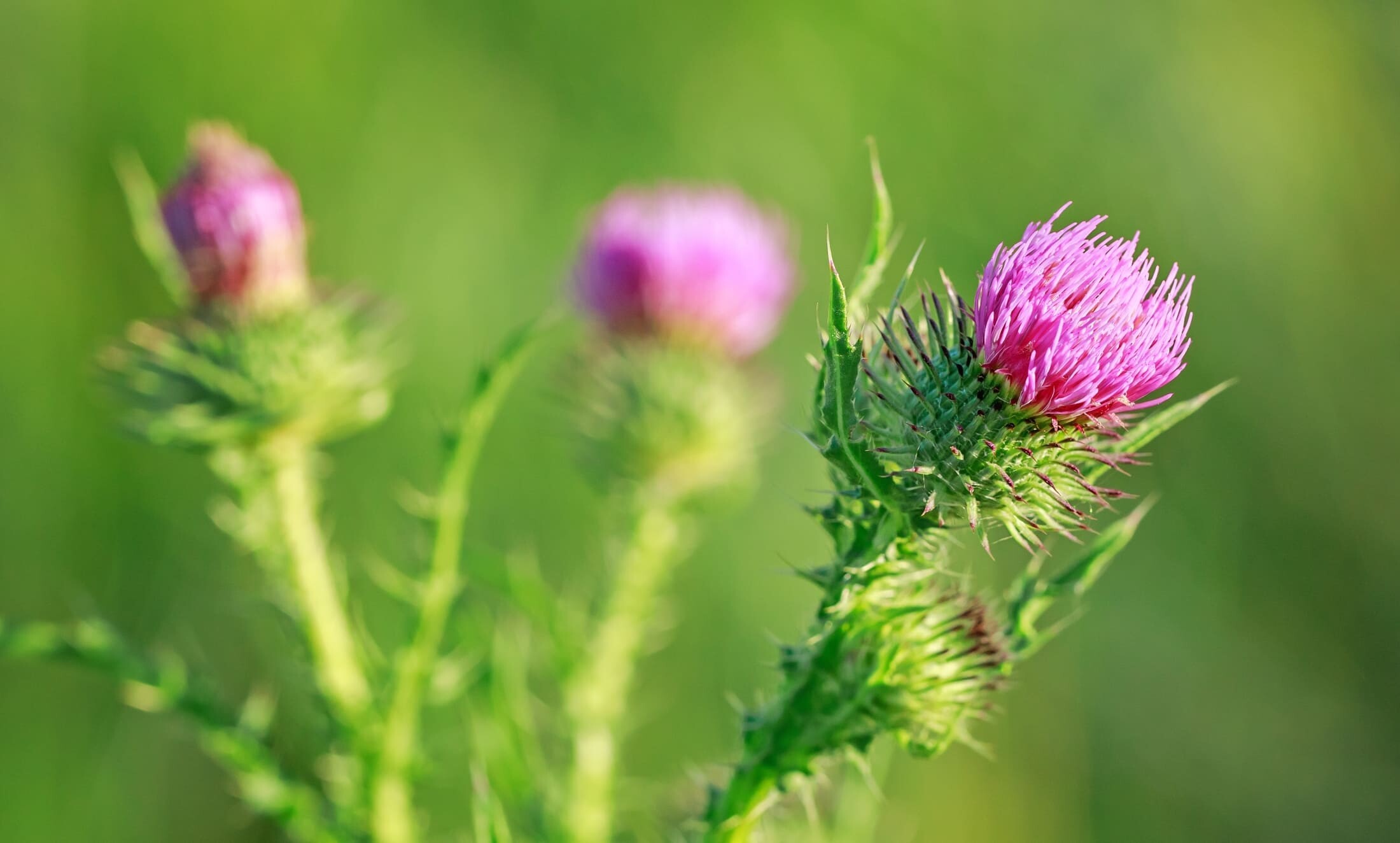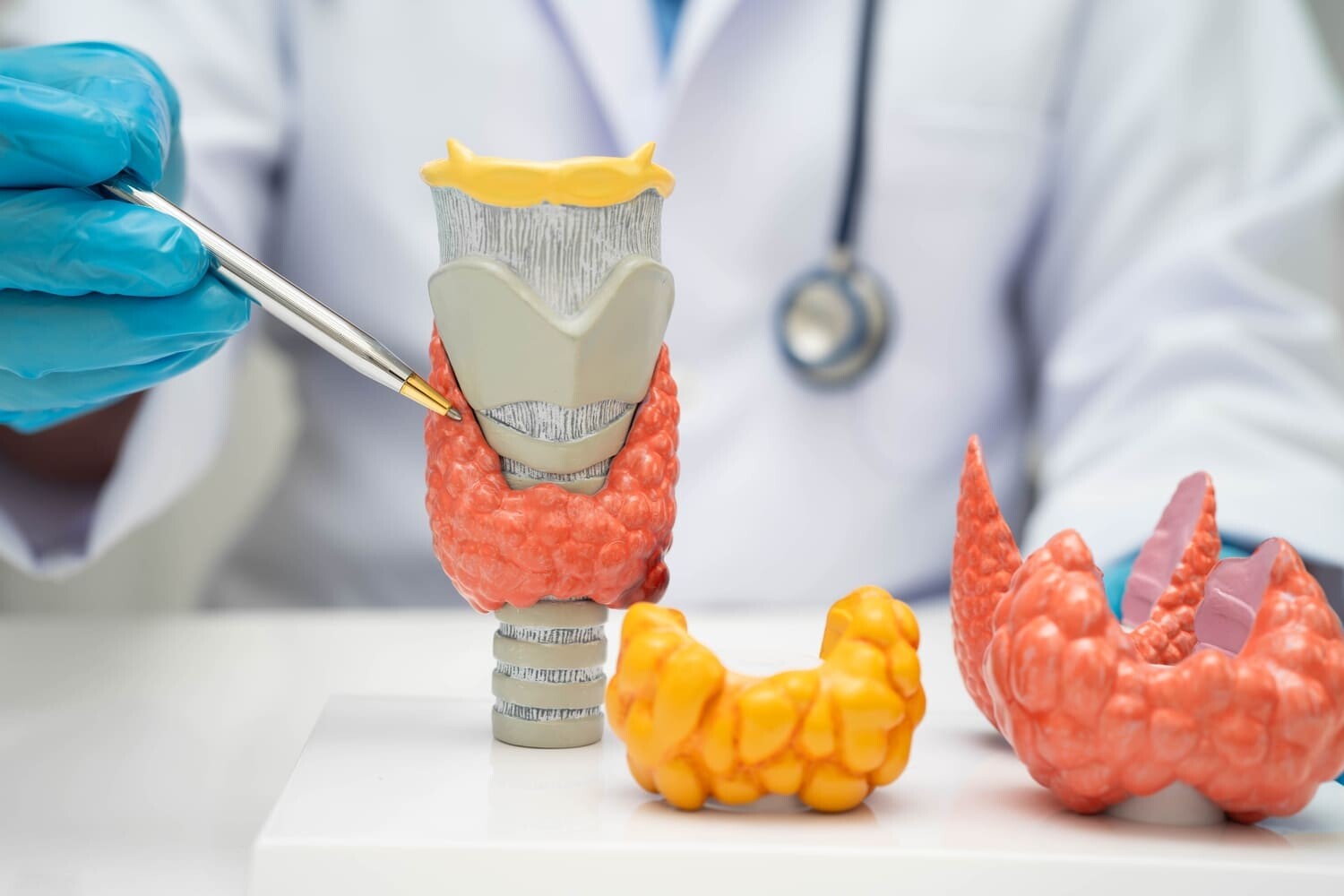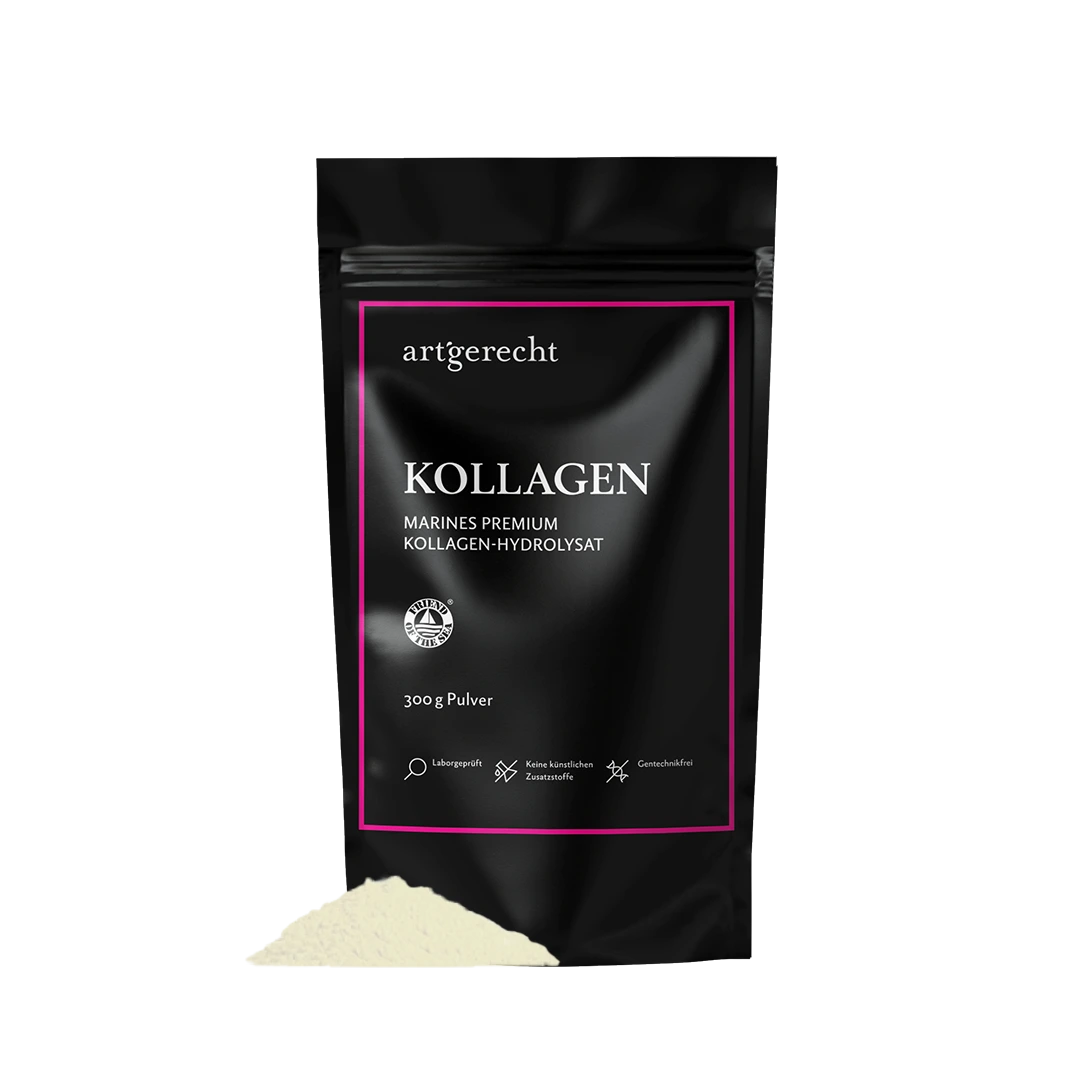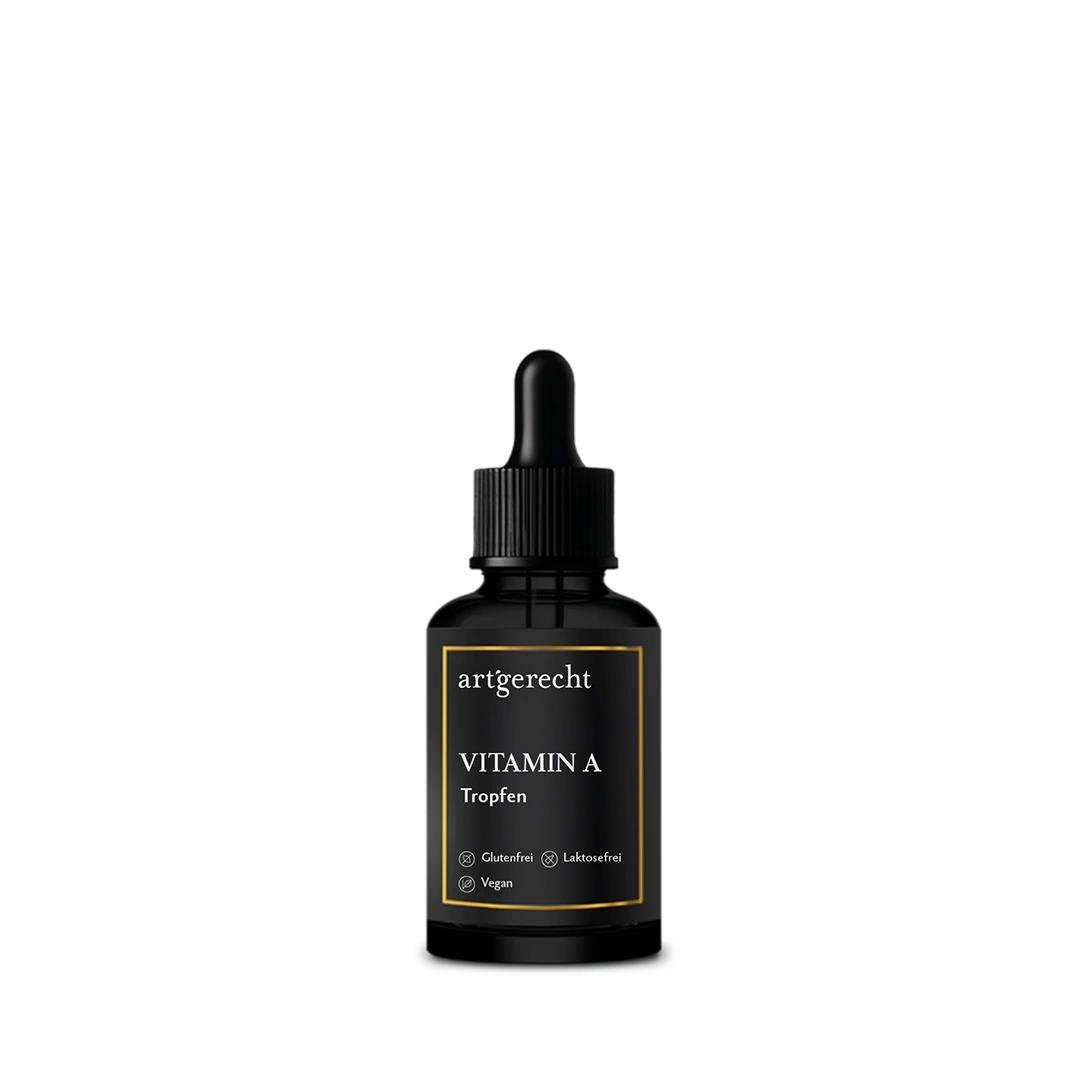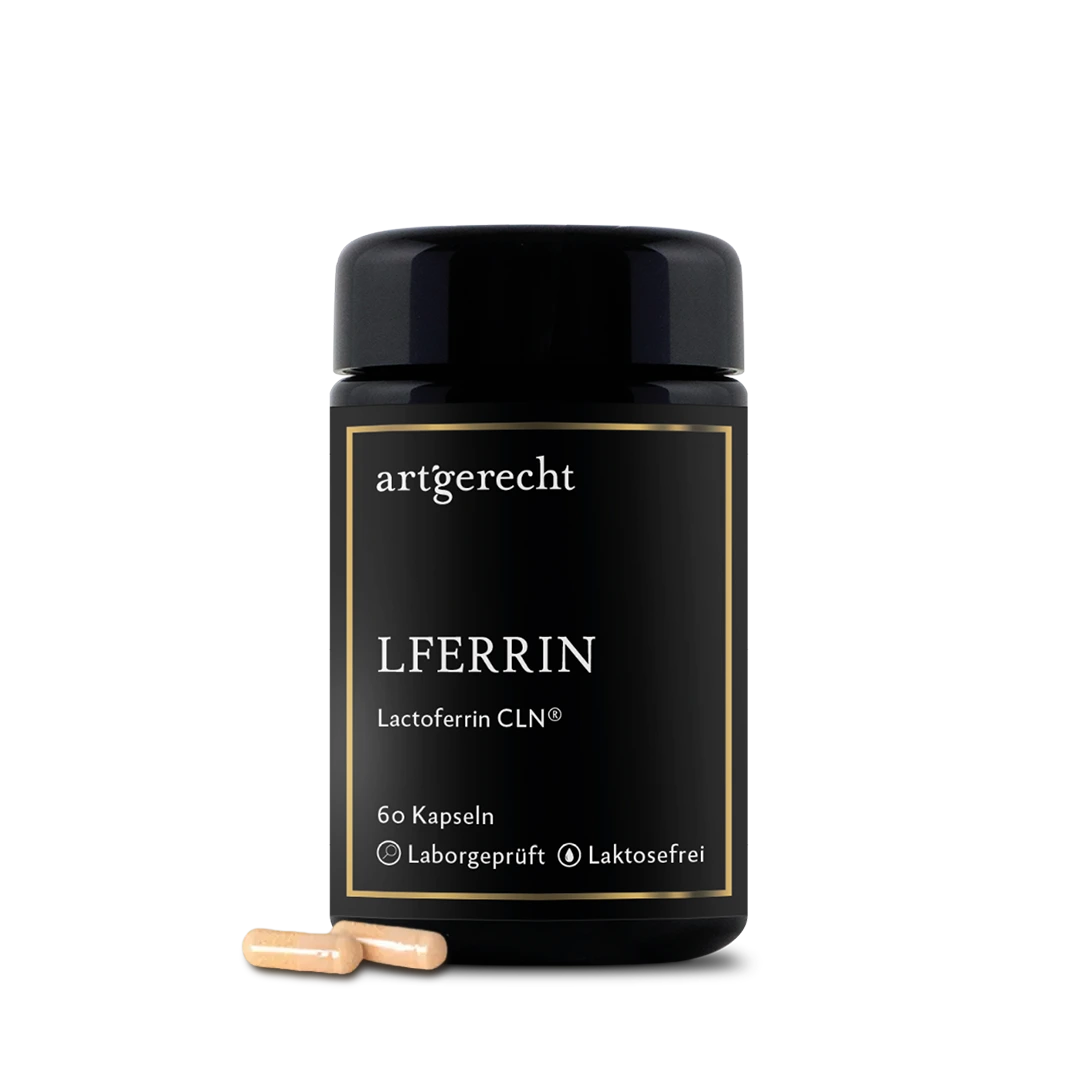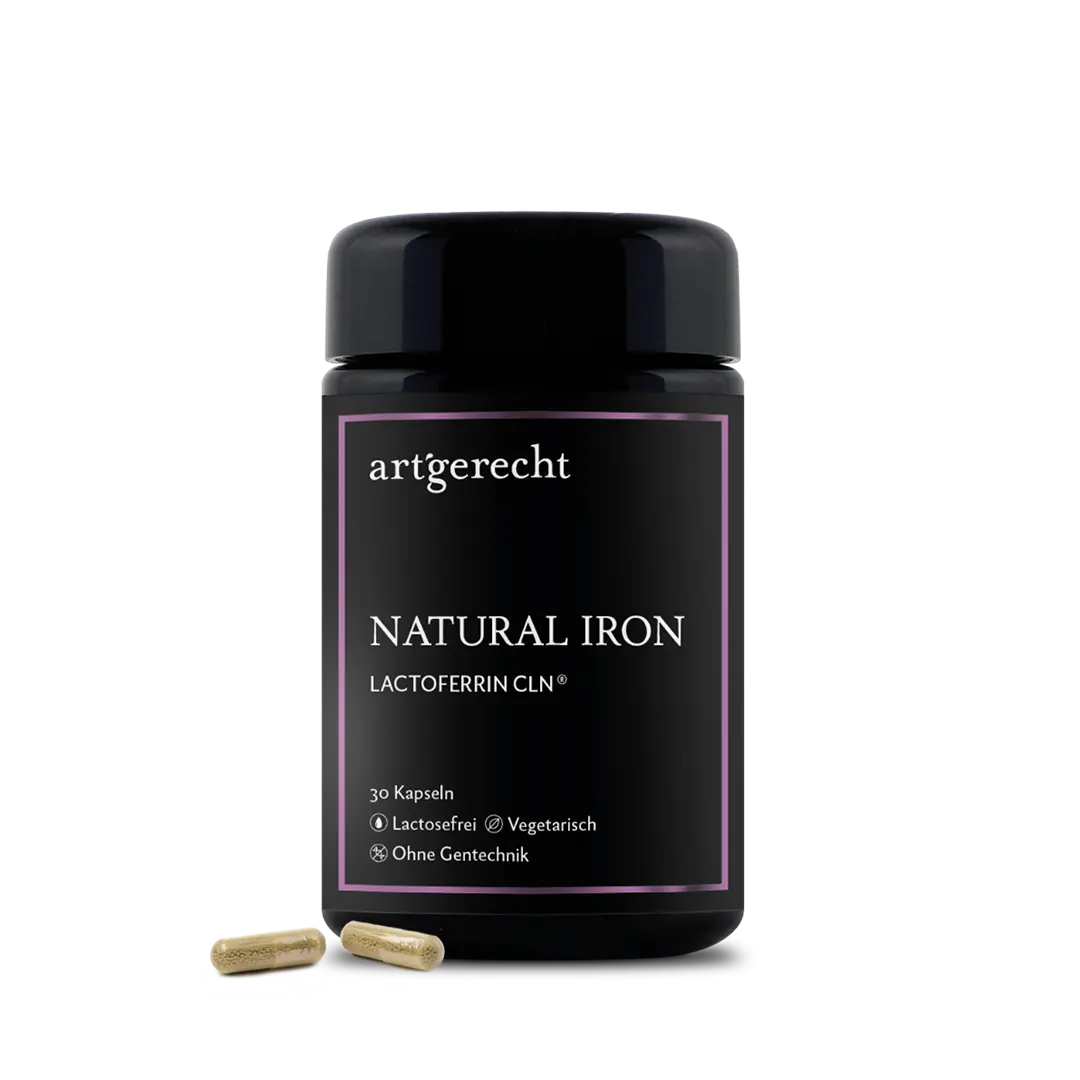As a metabolic center, the liver is integrated into two blood circuits - the only organ apart from the heart. It has far more tasks than detoxification alone and suffers when we eat an unhealthy diet. Problems with the liver are not only caused by alcohol consumption. With over 500 functions, the liver is an organ that makes a major contribution to our well-being. You could almost say: „Happy liver, happy life“.
What does the liver do?
The liver is our metabolic center and the largest gland in the human body. With over 500 tasks, it is one of our most important organs and a true generalist. At the same time, it is also one of the most resistant organs in our body and that is a good thing. If our lifespan were measured by our liver, we could live to be 300 years old. If parts of the liver have to be removed due to a disease, it can grow back to normal size even if 4/5 of the liver is removed. The liver is primarily involved in detoxification and energy production (in the form of blood sugar), helps with the utilization of nutrients, supports the production of many vital proteins and is a storage organ for fatty vitamins such as vitamin D.
How do you recognize liver problems?
If the function of the liver is impaired, this is not necessarily immediately noticeable. A good example: if you consume very small amounts of alcohol, you will not notice any immediate cognitive or physical impairment. If consumption exceeds a certain (individual) level, we are no longer able to think clearly cognitively and our physical performance is significantly impaired. We babble and stagger.
This is also often subject to a certain „daily form“, which already shows that the liver plays an important role in our vitality. Symptoms such as fatigue, a point pain between the shoulder blades, alcohol intolerance, problems sleeping through the night, difficulty concentrating, a taste for coffee that lasts longer than an hour after drinking coffeea unpleasant taste in the mouth in the morning, constipation or diarrhea as well as an aversion to fatty foods can be indications of a slight functional impairment of the liver. This may occur occasionally, but should never persist over a long period of time.
Liver and bile
Bile fluid is produced in the liver and collected in the gallbladder to excrete toxins. Bile is not only used for excretion, but also helps to emulsify (combine liquid and fat) dietary fats, enabling us to absorb the fats and fatty vitamins in our food. If not enough bile is produced by the liver, dietary fats cannot be absorbed sufficiently and fatty stools develop, which can lead to diarrhea and a high consumption of toilet paper. In addition, the composition of the intestinal flora changes and the development of dysbiosis is favored (Frost et al., 2019). Long-term fatty diets also increase the risk of a deficiency of the fatty vitamins A, D, E and K (Azer & Sankararaman, 2019).
The bile and its bile acids
Bile fluid consists of 80% water, the remaining 20% mainly contains gelatinous toxins, cholesterol and other fats as well as bile acids. The main function of bile acids is to emulsify fats from food so that they can be absorbed. Almost all bile acids are reabsorbed in the so-called enterohepatic circulation. The enterohepatic circulation is the circulation of various substances from the liver via the gallbladder to the intestine and back to the liver. Certain substances circulate in this way up to 12 times a day.
The bile acid metabolism
Current research results show that bile acids have a significant influence on our digestion, our intestinal flora and thus also on our health (Chatterjee et al., 2020). They serve as a kind of signaling, hormone-like substances (Craik, 2008), which are used to regulate various metabolic pathways (fat, electrolytes and immunological) (Joyce & Gahan, 2017).
When the bile acids (primary bile acids) are released into the intestine after food intake, they are first activated by our intestinal flora and are called secondary bile acids. This activation is necessary because the resulting secondary bile acids play an important role for our intestinal immune system. They can also influence the composition of our intestinal flora and have a significant impact on it (Wahlström, Sayin, Marschall, & Bäckhed, 2016).
The bile-acids-regulation-and-our-gut-flora
Bile acids and their production are subject to a close interplay between the intestinal flora, the nutrients ingested, hormones such as insulin, the amount of circulating inflammatory messengers and much more. Reduced bile levels in the gut can be associated with dysbiosis and low grade inflammation. Diet, antibiotic therapy and disease states also influence the balance between gut flora and bile acid (Ridlon, Kang, Hylemon, & Bajaj, 2014). Disturbances in this system are closely associated with diseases such as irritable bowel syndrome, inflammatory bowel disease, short bowel syndrome, Clostridium difficile infections, asthma and obesity (Joyce & Gahan, 2017).
What helps with liver problems?
- Vitamin D supports the production of bile acids and thus improves bile function, which is important for the removal of toxins (Stokes, Volmer, Grünhage, & Lammert, 2013). It also plays an important role in liver health (Ağalar, 2021).
- Curcumin (active ingredient from turmeric) has an anti-inflammatory effect (Aggarwal & Harikumar, 2009), which helps to produce more bile acids. In addition, curcumin stimulates liver detoxification and at the same time boosts the production of protective antioxidants (Agarwal, Goel, & Behari, 2010). It also shows symptom relief for digestive complaints (Dulbecco & Savarino, 2013).
- Ginger extract shows a strong synergy with curcumin (Bhagavathula et al., 2009) and has a strong hepatoprotective effect (Badawi, 2018). It also promotes liver detoxification (Eslamparast et al., 2014) and, like curcumin, shows an improvement in digestive complaints (Nikkhah Bodagh, Maleki, & Hekmatdoost, 2019).
- Choline, a semi-essential nutrient, is of great importance as an amino acid for our liver, especially with regard to fat metabolism. It prevents increased fat storage in the liver and contributes to normal liver function (Panel & Nda, 2011).
Foods to support the liver:
- Eggs (Corbin & Zeisel, 2012)
- Species-specific poultry (Alsheblak, Elsherbiny, El-Karef, & El-Shishtawy, 2016)
- Blueberries (Osman, Adawi, Ahrné, Jeppsson, & Molin, 2007)
- Beetroot (Clifford, Howatson, West, & Stevenson, 2015)
- Carrots (Nagy, 2012)
- Broccoli (Kikuchi et. a., 2015)
- Onions (Obioha, Suru, Ola-Mudathir, & Faremi, 2009)
- Garlic (Obioha u. a., 2009)
- Asparagus (Sorensen u. a., 2001)
- Walnuts (Gupta, Mah, Garcia, Antonypillai, & Van Der Poorten, 2015)
- Ginger (Bode & Dong, 2011)
- Coffee (Morisco, Lembo, Mazzone, Camera, & Caporaso, 2014)
- Greüner tea (Yin u. a., 2015)
- Cocoa (Miyazawa u. a., 2015)
- Turmeric (Aggarwal, Gupta, & Sung, 2013)
- Artichoke (Heidarian & Rafieian-Kopaei, 2013)
- Olive oil rich in polyphenols (Assy, Nassar, Nasser, & Grosovski, 2009)
Taboos for a healthy liver:
- Alkohol
- Fruchtzucker in großen Mengen
- Säfte
- Haushaltszucker
- SüSweets
- Dried fruit
- Finished products (often contain a lot of hidden sugar)
Literature:
Ağalar, H. G. (2021). Influence of vitamins (C, B3, D, and E) in liver health. In Influence of Nutrients, Bioactive Compounds, and Plant Extracts in Liver Diseases (p. 175–191). Elsevier. https://doi.org/10.1016/b978-0-12-816488-4.00009-7
Agarwal, R., Goel, S. K., & Behari, J. R. (2010). Detoxification and antioxidant effects of curcumin in rats experimentally exposed to mercury. Journal of Applied Toxicology, 30(5), n/a-n/a. https://doi.org/10.1002/jat.1517
Aggarwal, B. B., Gupta, S. C., & Sung, B. (2013). Curcumin: an orally bioavailable blocker of TNF and other pro-inflammatory biomarkers. British journal of pharmacology, 169(8), 1672–1692. https://doi.org/10.1111/bph.12131
Aggarwal, B. B., & Harikumar, K. B. (2009). Potential therapeutic effects of curcumin, the anti-inflammatory agent, against neurodegenerative, cardiovascular, pulmonary, metabolic, autoimmune and neoplastic diseases. International Journal of Biochemistry and Cell Biology, 41(1), 40–59. https://doi.org/10.1016/j.biocel.2008.06.010
Alsheblak, M. M., Elsherbiny, N. M., El-Karef, A., & El-Shishtawy, M. M. (2016). Protective effects of L-carnosine on CCl4 -induced hepatic injury in rats. European Cytokine Network, 27(1), 6–15. https://doi.org/10.1684/ecn.2016.0372
Assy, N., Nassar, F., Nasser, G., & Grosovski, M. (2009, April 21). Olive oil consumption and non-alcoholic fatty liver disease. World Journal of Gastroenterology. Baishideng Publishing Group Inc. https://doi.org/10.3748/wjg.15.1809
Azer, S. A., & Sankararaman, S. (2019). Steatorrhea. StatPearls Publishing, Treasure Island (FL). Retrieved from http://europepmc.org/books/NBK541055
Badawi, M. S. (2018). Histological study of the protective role of ginger on piroxicam-induced liver toxicity in mice. Journal of the Chinese Medical Association, 1–9. https://doi.org/10.1016/j.jcma.2018.06.006
Bhagavathula, N., Warner, R. L., Dasilva, M., McClintock, S. D., Barron, A., Aslam, M. N., … Varani, J. (2009). A combination of curcumin and ginger extract improves abrasion wound healing in corticosteroid-impaired hairless rat skin. Wound Repair and Regeneration, 17(3), 360–366. https://doi.org/10.1111/j.1524-475X.2009.00483.x
Bode, A. M., & Dong, Z. (2011). The amazing and mighty ginger. In Herbal Medicine: Biomolecular and Clinical Aspects: Second Edition (pp. 131–156). CRC Press. https://doi.org/10.1201/b10787-8
Chatterjee, I., Lu, R., Zhang, Y., Zhang, J., Dai, Y., Xia, Y., & Sun, J. (2020). Vitamin D receptor promotes healthy microbial metabolites and microbiome. Scientific Reports, 10(1), 1–18. https://doi.org/10.1038/s41598-020-64226-7
Clifford, T., Howatson, G., West, D. J., & Stevenson, E. J. (2015, April 14). The potential benefits of red beetroot supplementation in health and disease. Nutrients. MDPI AG. https://doi.org/10.3390/nu7042801
Corbin, K. D., & Zeisel, S. H. (2012). Choline metabolism provides novel insights into nonalcoholic fatty liver disease and its progression. Current Opinion in Gastroenterology, 28(2), 159–165. https://doi.org/10.1097/MOG.0b013e32834e7b4b
Craik, C. (2008). Bile Acids are Nutrient Signaling Hormones Huiping. Bone, 23(1), 1–7. https://doi.org/10.1016/j.steroids.2014.04.016.Bile
Dulbecco, P., & Savarino, V. (2013). Therapeutic potential of curcumin in digestive diseases, 19(48), 9256–9270. https://doi.org/10.3748/wjg.v19.i48.9256
Eslamparast, T., Poustchi, H., Zamani, F., Sharafkhah, M., Malekzadeh, R., & Hekmatdoost, A. (2014). Synbiotic supplementation in nonalcoholic fatty liver disease: A randomized, double-blind, placebo-controlled pilot study. American Journal of Clinical Nutrition, 99(3), 535–542. https://doi.org/10.3945/ajcn.113.068890
Frost, F., Kacprowski, T., Rühlemann, M., Bülow, R., Kühn, J. P., Franke, A., … Lerch, M. M. (2019). Impaired Exocrine Pancreatic Function Associates With Changes in Intestinal Microbiota Composition and Diversity. Gastroenterology, 156(4), 1010–1015. https://doi.org/10.1053/j.gastro.2018.10.047
Gupta, V., Mah, X. J., Garcia, M. C., Antonypillai, C., & Van Der Poorten, D. (2015, October 7). Oily fish, coffee and walnuts: Dietary treatment for nonalcoholic fatty liver disease. World Journal of Gastroenterology. WJG Press. https://doi.org/10.3748/wjg.v21.i37.10621
Heidarian, E., & Rafieian-Kopaei, M. (2013). Protective effect of artichoke (Cynara scolymus) leaf extract against lead toxicity in rat. Pharmaceutical Biology, 51(9), 1104–1109. https://doi.org/10.3109/13880209.2013.777931
Joyce, S. A., & Gahan, C. G. M. (2017). Disease-Associated Changes in Bile Acid Profiles and Links to Altered Gut Microbiota. Digestive Diseases, 35(3), 169–177. https://doi.org/10.1159/000450907
Kikuchi, M., Ushida, Y., Shiozawa, H., Umeda, R., Tsuruya, K., Aoki, Y., … Nishizaki, Y. (2015). Sulforaphane-rich broccoli sprout extract improves hepatic abnormalities in male subjects. World Journal of Gastroenterology, 21(43), 12457–12467. https://doi.org/10.3748/wjg.v21.i43.12457
Miyazawa, T., Suzuki, K., Nakagawa, K., Yamamoto, T., Miyazawa, T., Kimura, F., & Kamei, M. (2015). Carbon tetrachloride-induced hepatic and renal damages in rat: Inhibitory effects of cacao polyphenol. Bioscience, Biotechnology and Biochemistry, 79(10), 1669–1675. https://doi.org/10.1080/09168451.2015.1039481
Morisco, F., Lembo, V., Mazzone, G., Camera, S., & Caporaso, N. (2014). Coffee and liver health. In Journal of Clinical Gastroenterology (Vol. 48, pp. S87–S90). Lippincott Williams and Wilkins. https://doi.org/10.1097/MCG.0000000000000240
Nagy, L. (2012, July). Would eating carrots protect your liver? A new role involving NKT cells for retinoic acid in hepatitis. European Journal of Immunology. Eur J Immunol. https://doi.org/10.1002/eji.201242705
Nikkhah Bodagh, M., Maleki, I., & Hekmatdoost, A. (2019). Ginger in gastrointestinal disorders: A systematic review of clinical trials. Food Science and Nutrition, 7(1), 96–108. https://doi.org/10.1002/fsn3.807
Obioha, U. E., Suru, S. M., Ola-Mudathir, K. F., & Faremi, T. Y. (2009). Hepatoprotective potentials of onion and garlic extracts on cadmium-induced oxidative damage in rats. Biological Trace Element Research, 129(1–3), 143–156. https://doi.org/10.1007/s12011-008-8276-7
Osman, N., Adawi, D., Ahrné, S., Jeppsson, B., & Molin, G. (2007). Endotoxin- and d-galactosamine-induced liver injury improved by the administration of Lactobacillus, Bifidobacterium and blueberry. Digestive and Liver Disease, 39(9), 849–856. https://doi.org/10.1016/j.dld.2007.06.001
Panel, E., & Nda, A. (2011). Scientific Opinion on the substantiation of health claims related to choline and contribution to normal lipid metabolism (ID 3186), maintenance of normal liver function (ID 1501), contribution to normal homocysteine metabolism (ID 3090), maintenance of no. EFSA Journal, 9(4). https://doi.org/10.2903/j.efsa.2011.2056
Ridlon, J. M., Kang, D. J., Hylemon, P. B., & Bajaj, J. S. (2014). Bile acids and the gut microbiome. Current Opinion in Gastroenterology. Lippincott Williams and Wilkins. https://doi.org/10.1097/MOG.0000000000000057
Sorensen, M., Jensen, B. R., Poulsen, H. E., Deng, X. S., Tygstrup, N., Dalhoff, K., & Loft, S. (2001). Effects of a Brussels sprouts extract on oxidative DNA damage and metabolizing enzymes in rat liver. Food and Chemical Toxicology, 39(6), 533–540. https://doi.org/10.1016/S0278-6915(00)00170-8
Stokes, C. S., Volmer, D. A., Grünhage, F., & Lammert, F. (2013, March). Vitamin D in chronic liver disease. Liver International. Liver Int. https://doi.org/10.1111/liv.12106
Wahlstr, A., Sayin, S. I., Marschall, H. U., & Bäckhed, F. (2016, July 12). Intestinal Crosstalk between Bile Acids and Microbiota and Its Impact on Host Metabolism. Cell Metabolism. Cell Press. https://doi.org/10.1016/j.cmet.2016.05.005
Yin, X., Yang, J., Li, T., Song, L., Han, T., Yang, M., … Zhong, X. (2015, June 30). The effect of green tea intake on risk of liver disease: A meta analysis. International Journal of Clinical and Experimental Medicine. E-Century Publishing Corporation. Retrieved from www.ijcem.com/


